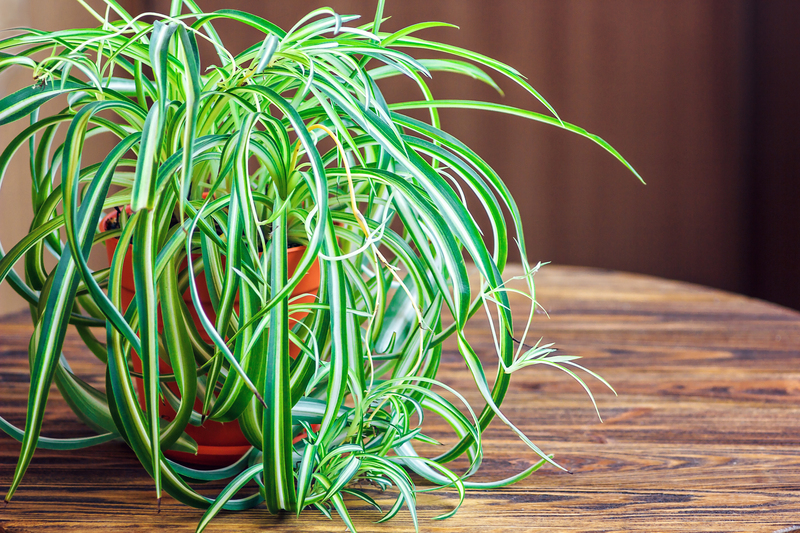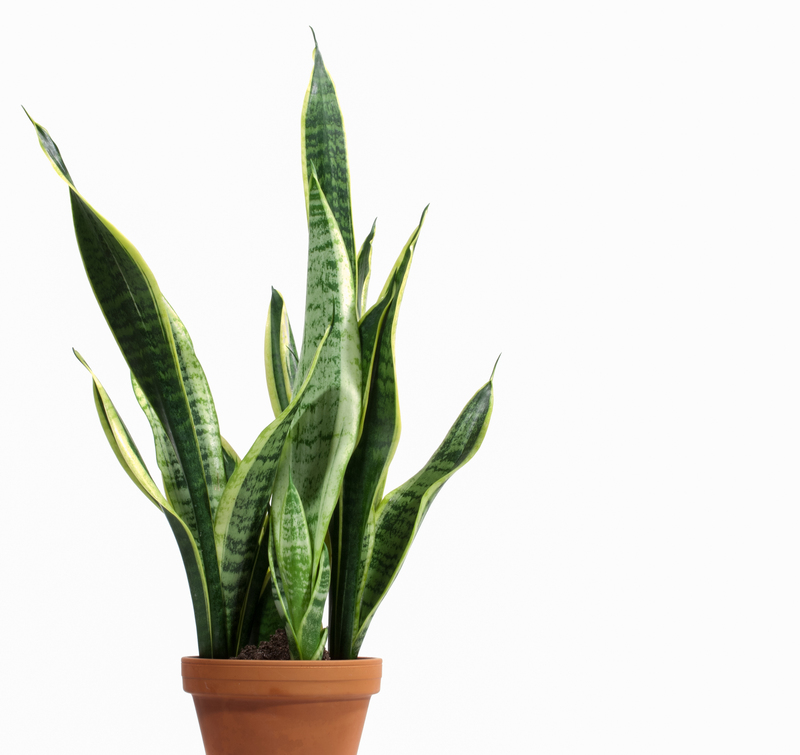Cultivating Fertile Grounds from Organic Refuse
Posted on 15/08/2025
Cultivating Fertile Grounds from Organic Refuse: A Comprehensive Guide
Cultivating fertile grounds from organic refuse is more than just a sustainable practice--it's a transformative process that turns waste into nutrient-rich soil, empowering gardeners, farmers, and communities to achieve healthier crops and more eco-friendly ecosystems. In this article, we will dive deep into the methods, benefits, and science behind converting organic waste into rich land. Whether you're an urban gardener or run a large-scale farm, learning how to harness organic garbage for soil vitality could revolutionize your approach.

Understanding Organic Refuse and Its Potential
Organic refuse, often referred to as organic waste, includes kitchen scraps, yard waste, agricultural residues, and any biodegradable material that comes from plants or animals. Too often, these valuable resources end up in landfills, contributing to harmful greenhouse gases instead of enhancing our soil. By redirecting this organic matter back into the earth, we not only reduce landfill usage but simultaneously create fertile, living soil.
Types of Organic Refuse Commonly Used
- Food scraps: Vegetable peels, fruit cores, coffee grounds, eggshells, and bread pieces.
- Yard trimmings: Leaves, grass clippings, twigs, and plant trimmings.
- Manure: Animal manure from herbivores such as horses, cows, and rabbits.
- Crop residues: Stalks, husks, shells, and similar farming by-products.
- Paper and cardboard: Only if uncoated and shredded, these complement nitrogen-rich waste.
These materials, when treated correctly, break down to form compost--the gold standard for enriching soil with organic refuse.
The Science Behind Turning Organic Refuse into Fertile Soil
The magic of transforming waste into fertile earth lies in a natural process: decomposition. Microorganisms--bacteria, fungi, and other decomposers--work together to break down complex organic molecules into simpler compounds. During this process, the waste heats up, pathogens are neutralized, and nutrients are made accessible to plants. The result? A dark, crumbly substance known as compost that supercharges soil health.
Benefits of Using Organic Refuse for Fertile Grounds
- Improved Soil Structure: Compost increases soil's capacity to hold moisture and nutrients.
- Reduction in Chemical Dependency: By naturally fortifying the soil, compost reduces the need for synthetic fertilizers.
- Enhanced Biodiversity: Soils rich in organic matter foster beneficial microbes and insects.
- Climate Benefits: Diverting waste from landfills cuts down methane emissions--a potent greenhouse gas.
- Economic Savings: Gardeners and farmers save money with self-made fertilizer.
How to Begin Cultivating Fertile Grounds from Organic Waste
Ready to change how you treat organic refuse? Let's get practical. Creating fertile ground from organic garbage is an accessible process, no matter your scale.
Step 1: Collect and Sort Your Organic Refuse
Gather suitable organic materials daily. Keep a designated kitchen bin for compostables and a separate pile for garden and yard waste. Exclude meat, dairy, oily foods, diseased plants, or anything chemically treated, as these can hamper decomposition or attract pests.
- Chop or shred larger items to speed up decomposition.
- Keep materials dry until ready to compost.
Step 2: Choose Your Composting Method
Selecting the right technique for turning refuse into new soil depends on your resources and space:
- Traditional Composting Pile: Common for backyards, it involves layering browns (carbon-rich, e.g., leaves, cardboard) and greens (nitrogen-rich, e.g., kitchen scraps, grass clippings).
- Compost Bins or Tumblers: Great for small spaces, these help contain the process and make turning easier.
- Vermicomposting: Uses worms (usually red wigglers) to break down waste quickly and efficiently, producing nutrient-packed worm castings.
- Bokashi Method: An anaerobic fermentation process ideal for compact urban environments, even handling meat and dairy.
Step 3: Balance and Maintain Your Pile
For optimal composting, maintain a balance of carbon to nitrogen (often called the C:N ratio). A rough guide is three parts "browns" to one part "greens." Too much green material makes a wet, smelly pile; too much brown leads to slow decomposition.
Maintenance Tips:- Turn the pile regularly to introduce oxygen, aiding aerobic microorganisms.
- Keep the pile moist, like a wrung-out sponge.
- Monitor for foul odors, which indicate improper balance or lack of oxygen.
Step 4: Harvest and Apply Your Finished Compost
Your compost is ready when it looks dark and crumbly with an earthy smell--usually after a few months, depending on conditions. Sift to remove larger chunks, then use it to enrich depleted soils, create fertile garden beds, or top dress lawns.
- Mix into planting holes for vegetables and flowers.
- Spread as a mulch around trees and shrubs.
- Blend with potting soil for indoor plants or seedlings.
Advanced Tips for Maximizing Soil Fertility from Organic Debris
To unlock the full potential of cultivating lush grounds from discarded organics, go beyond the basics:
1. Inoculate Your Compost
Introduce beneficial microbes or biochar to speed up decomposition and boost the microbial diversity, amplifying your soil's resilience.
2. Use Green Manures and Cover Crops
Grow plants like clover, vetch, or rye, then chop and use them as green manure, adding additional nutrients to the soil and protecting against erosion.
3. Layering and Sheet Mulching (Lasagna Gardening)
Alternate layers of organic matter directly onto garden beds, bypassing traditional compost piles for in situ soil creation.
4. Monitor Soil Health
Test your soil's nutrient levels and organic content to ensure you're achieving desired fertility. Healthy, dark soil signals successful organic refuse integration.
Common Challenges and Solutions
Even seasoned composters encounter obstacles. Here are typical issues with building fertile earth from organic refuse:
- Bad odors: Usually from too much nitrogen, too little oxygen, or inappropriate materials. Fix by adding more browns and turning the pile.
- Pile isn't breaking down: Often due to dryness or too many large pieces. Add water and chop items smaller.
- Pests: Attracted by improper materials (meat, oils). Exclude these and cover food scraps with browns.
- Compost is too wet: Mix in dry leaves, shredded paper, or cardboard.
The Environmental Impact: Closing the Organic Loop
Upcycling organic refuse into fertile land is not just personal gain--it's a crucial part of the global movement for zero waste and regenerative agriculture. Traditional farming often depletes soil without replenishing nutrients. Each time we cultivate grounds from organic garbage, we:
- Reduce landfill waste and emissions.
- Rebuild soil carbon--a cornerstone in fighting climate change.
- Promote healthier, local food systems.
- Enhance drought resistance and reduce runoff pollution.
The circular approach ensures today's food scraps become tomorrow's harvests, sustaining generations to come.
Case Studies: Transformations from Trash to Treasure
Urban Gardens Revitalized
In cities like New York, San Francisco, and London, community compost programs are revitalizing neglected lots. Volunteers collect organic waste from local residents, turning it into high-grade compost that supports lush vegetables and vibrant blooms instead of derelict soil. Over time, entire neighborhoods see greener, cooler environments and improved food security.
Farm-Scale Soil Regeneration
Progressive farmers worldwide now divert tons of agricultural residues--corn husks, pruned vines, manure--from waste streams straight to fields. As a result, their yields increase, chemical fertilizer costs drop, and land that once suffered from erosion now blooms with biodiversity.

Getting Started: Practical Tools and Resources
Interested in cultivating rich soil from organic debris? Here are tools and tips to help ensure success:
- Compost thermometer: Monitor internal pile temperatures for proper breakdown.
- Pitchfork or aerator: Makes turning and mixing easier.
- Screens or sifters: For separating finished compost from larger chunks.
- Educational platforms: Online guides, local agricultural extensions, and community workshops.
Conclusion: Bringing Life Back to the Earth
Cultivating fertile grounds from organic refuse is a win-win scenario for people and the planet. By recognizing value in what we once called "waste," everyone can contribute to a greener, more abundant world. Whether you're transforming kitchen scraps on a windowsill or converting tons of farm waste, every effort helps replenish our soil, closes ecological loops, and grows a healthier future.
To summarize, successful transformation of organic garbage into fertile soil requires a thoughtful approach: proper collection, smart layering, moisture control, and patience. The results--healthier crops, minimized waste, and restored lands--are well worth the effort.
Begin your journey today and witness firsthand how composting organic refuse can yield gardens and landscapes brimming with life!

